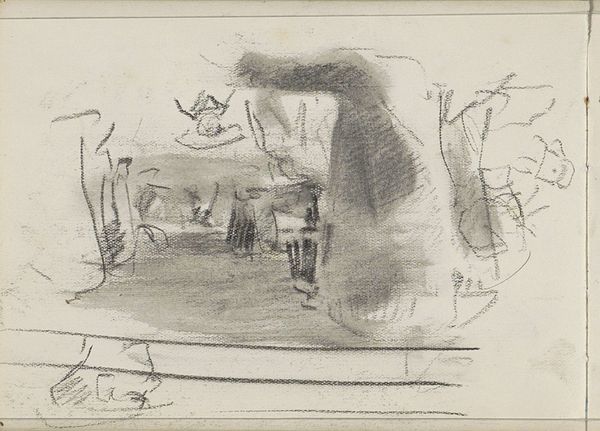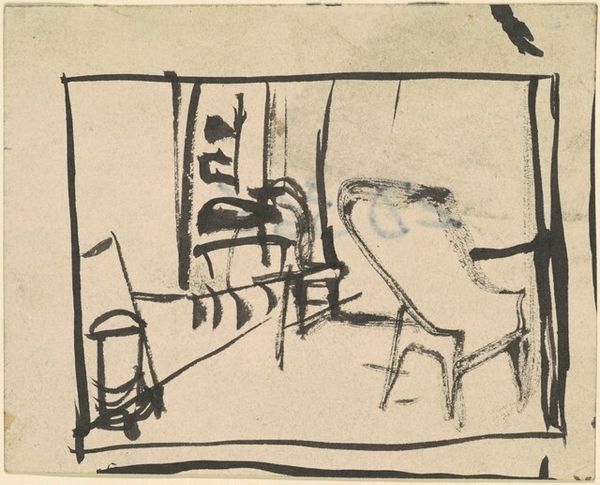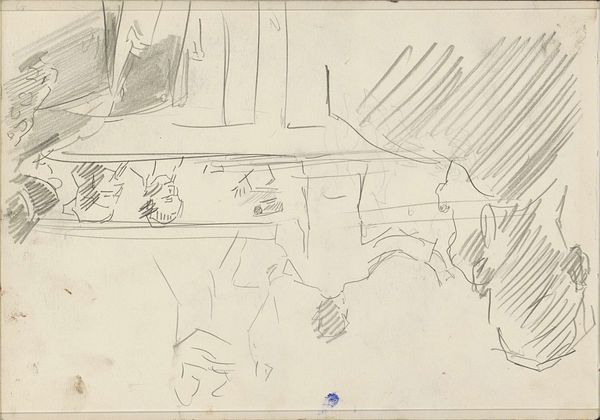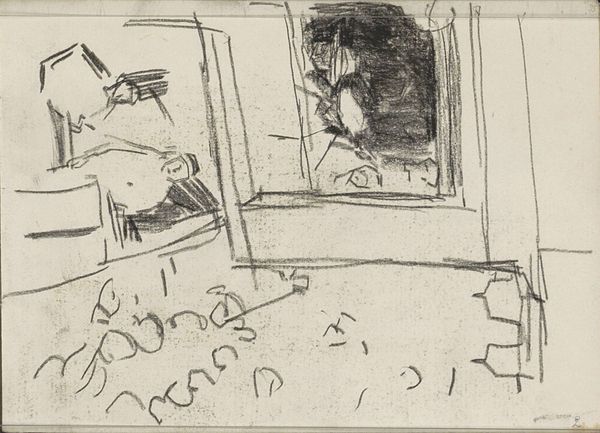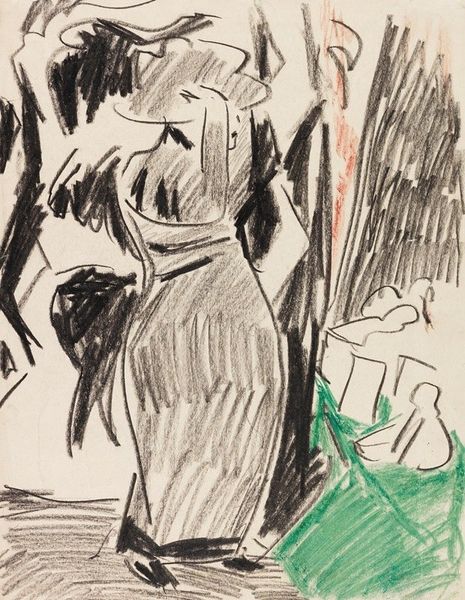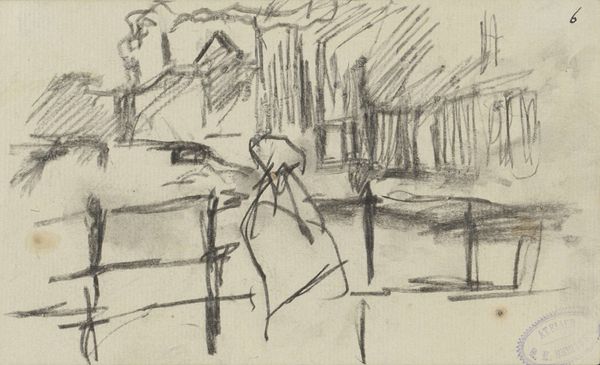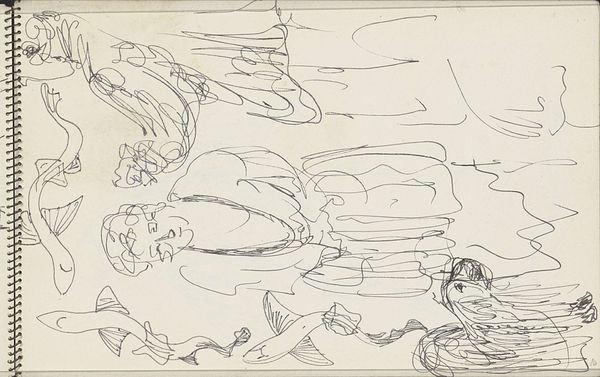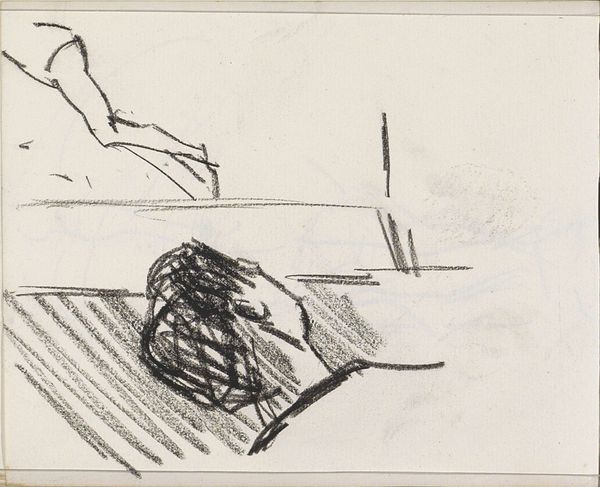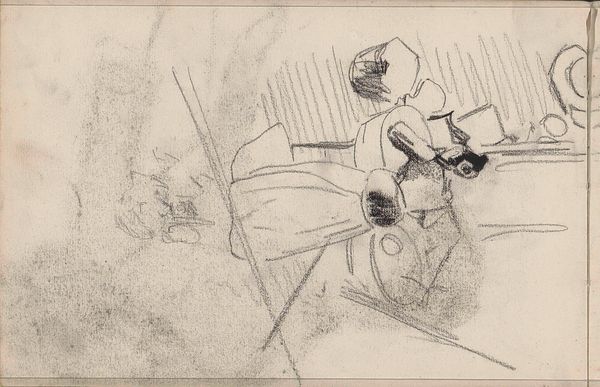
drawing, coloured-pencil, paper
#
drawing
#
coloured-pencil
#
german-expressionism
#
paper
#
abstract
#
coloured pencil
#
expressionism
Copyright: Public Domain: Artvee
Curator: Welcome. Today, we're looking at "Stillleben neben geschnitztem Stuhl," or "Still Life Beside Carved Chair," a 1909 colored-pencil drawing by Ernst Ludwig Kirchner. Editor: It strikes me immediately as raw and a bit unsettling. The colours feel acidic, and those angular forms suggest a certain tension, as if everything is on edge. Curator: Kirchner, as a leading figure in German Expressionism, certainly explored unease and emotional intensity. The still life elements—the fruit, the carved chair—become vehicles for expressing something deeper. Notice how the objects aren't just represented; they're imbued with a restless energy. The choice to abstract common objects creates a strange intimacy. Editor: Right, and it makes you think about what these objects represented to him. What was it about this fruit, this chair, that warranted such a charged depiction? Expressionism wasn't just about mimicking reality, but interpreting and communicating emotions attached to objects. You’re invited into his experience with his immediate surroundings. Curator: Exactly. Consider, for instance, the rough lines and exaggerated forms of the carved chair. In many cultures, chairs, especially carved ones, symbolize authority or status, sometimes spirituality. Here, however, it seems distorted, almost grotesque. That says something about the era, perhaps about a feeling of decaying authority in a changing world. There are certainly connections between Expressionism, existentialism, and social change. Editor: I agree. And in terms of that social change, we must remember this was just before the First World War, a time of increasing anxiety. Objects were viewed less as inert items and more as repositories of emotion and psychological significance. Do you read the shapes on the fruit bowl as any symbols from local mythology? Curator: Although that's interesting to consider, it is likely only that Kirchner took cues from the shapes present in Fauvism and its French Modernism, which would inform his emotional perspective without referencing specific mythic symbols. The lack of formal rendering almost reads as alienation through modern abstraction. I see how the immediacy of the coloured pencil really complements that sense of raw emotion he's trying to convey. Editor: It really is striking how a seemingly simple still life can be so charged with emotion. It compels us to question our relationship with everyday objects and their connection to our own emotional states and broader sociopolitical contexts. I think it will be a good reference point for students to understand post-modern concepts of emotional abstraction. Curator: Agreed. Kirchner’s still life offers a rich and multilayered viewing experience, pushing us to look beyond the surface.
Comments
No comments
Be the first to comment and join the conversation on the ultimate creative platform.
